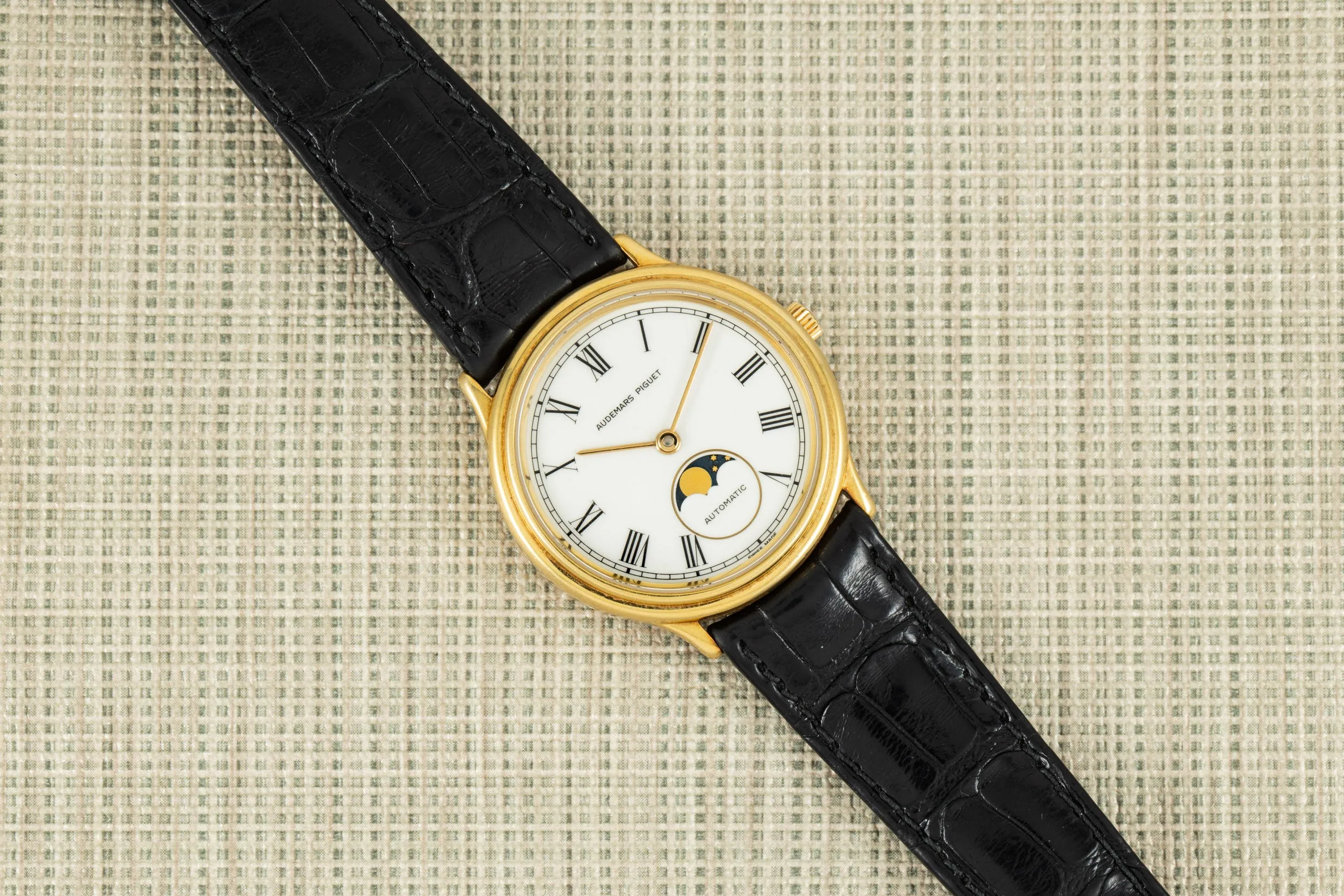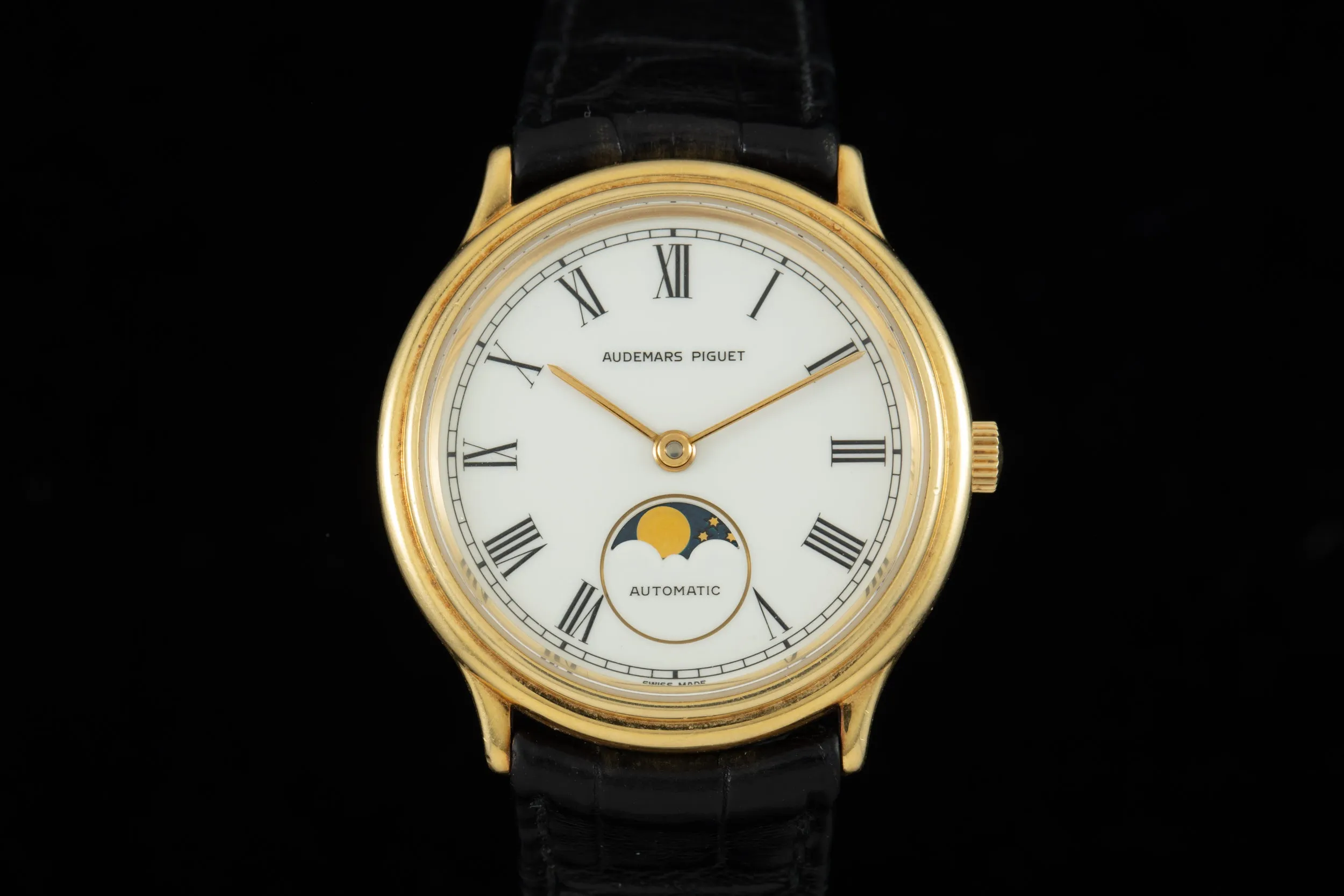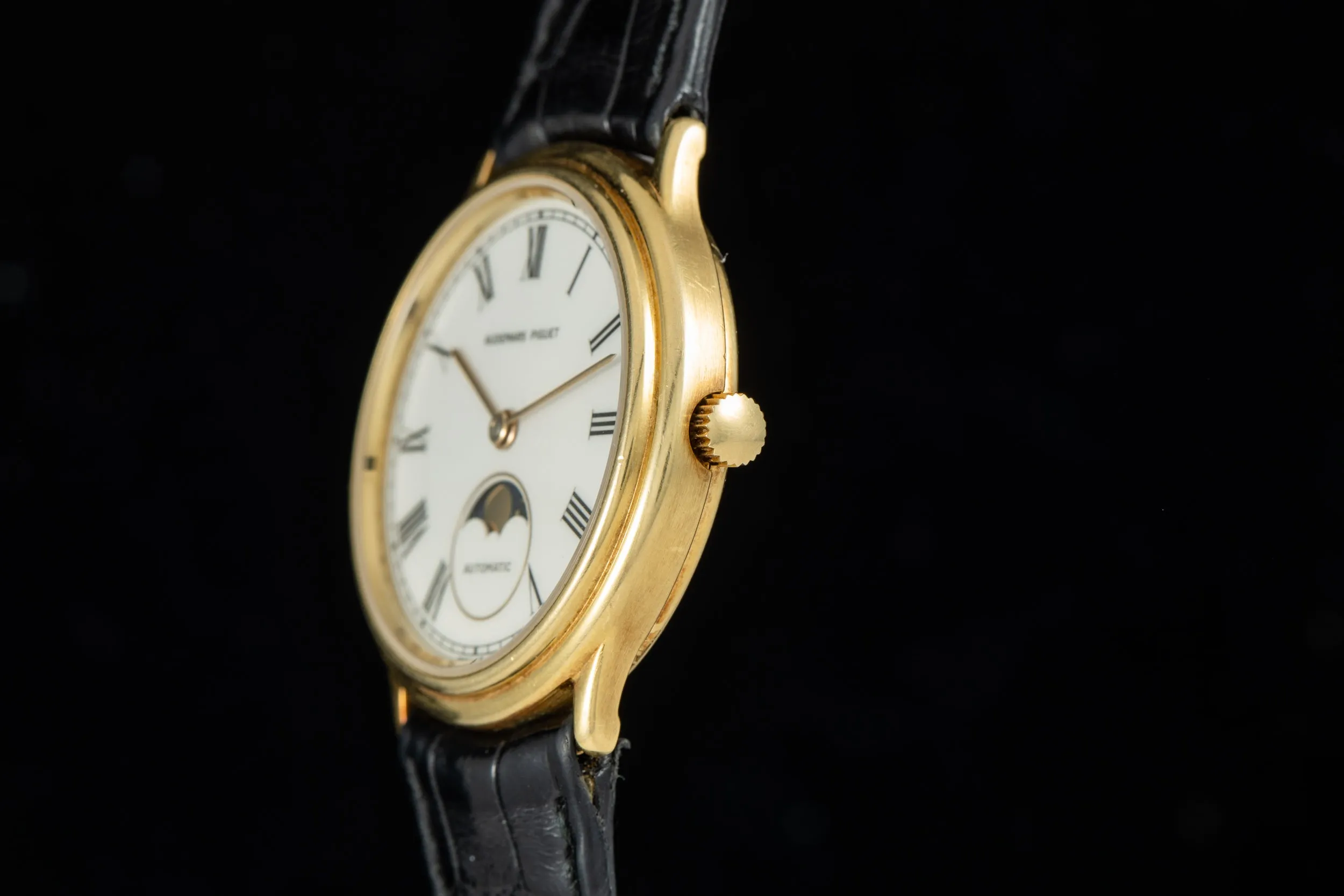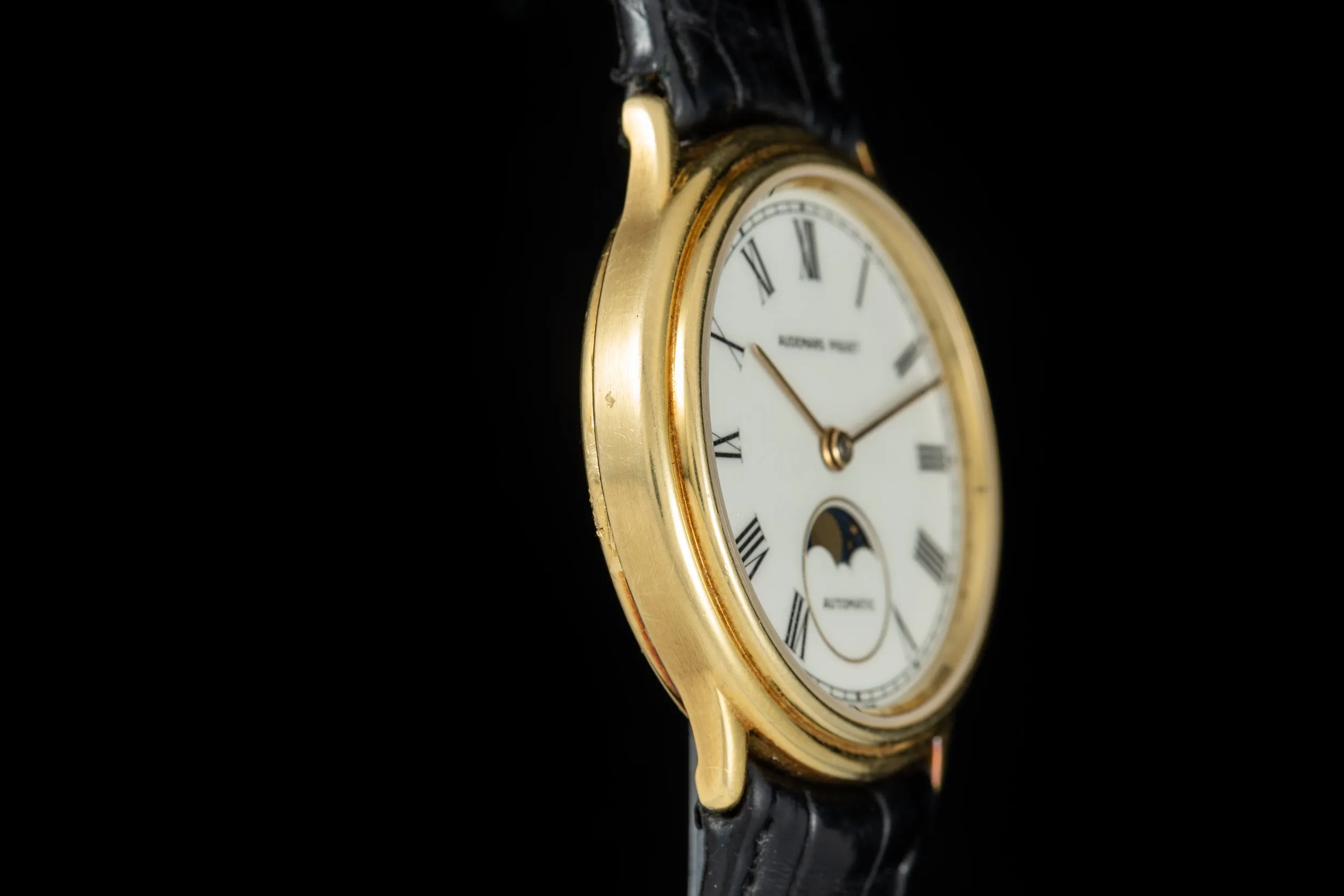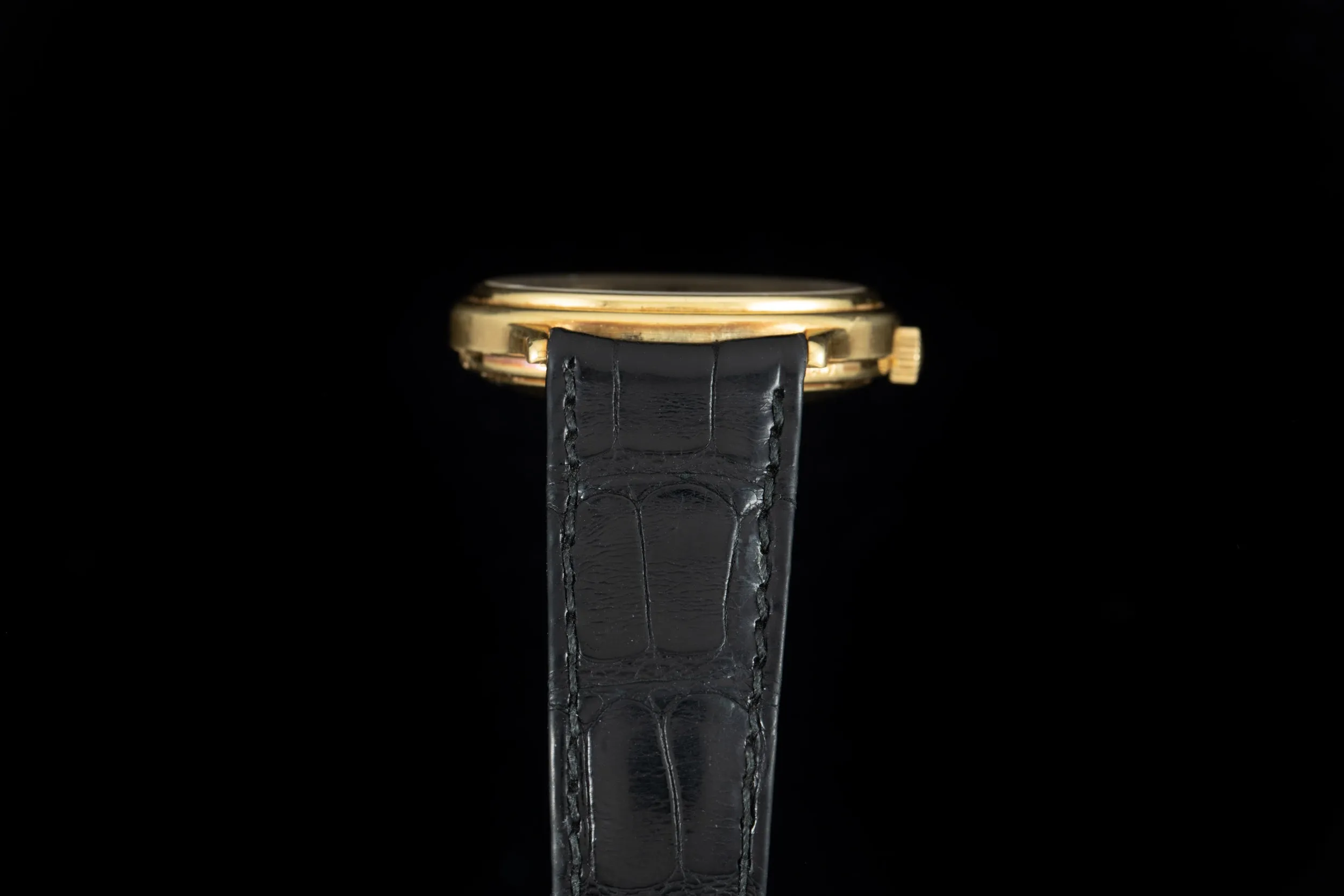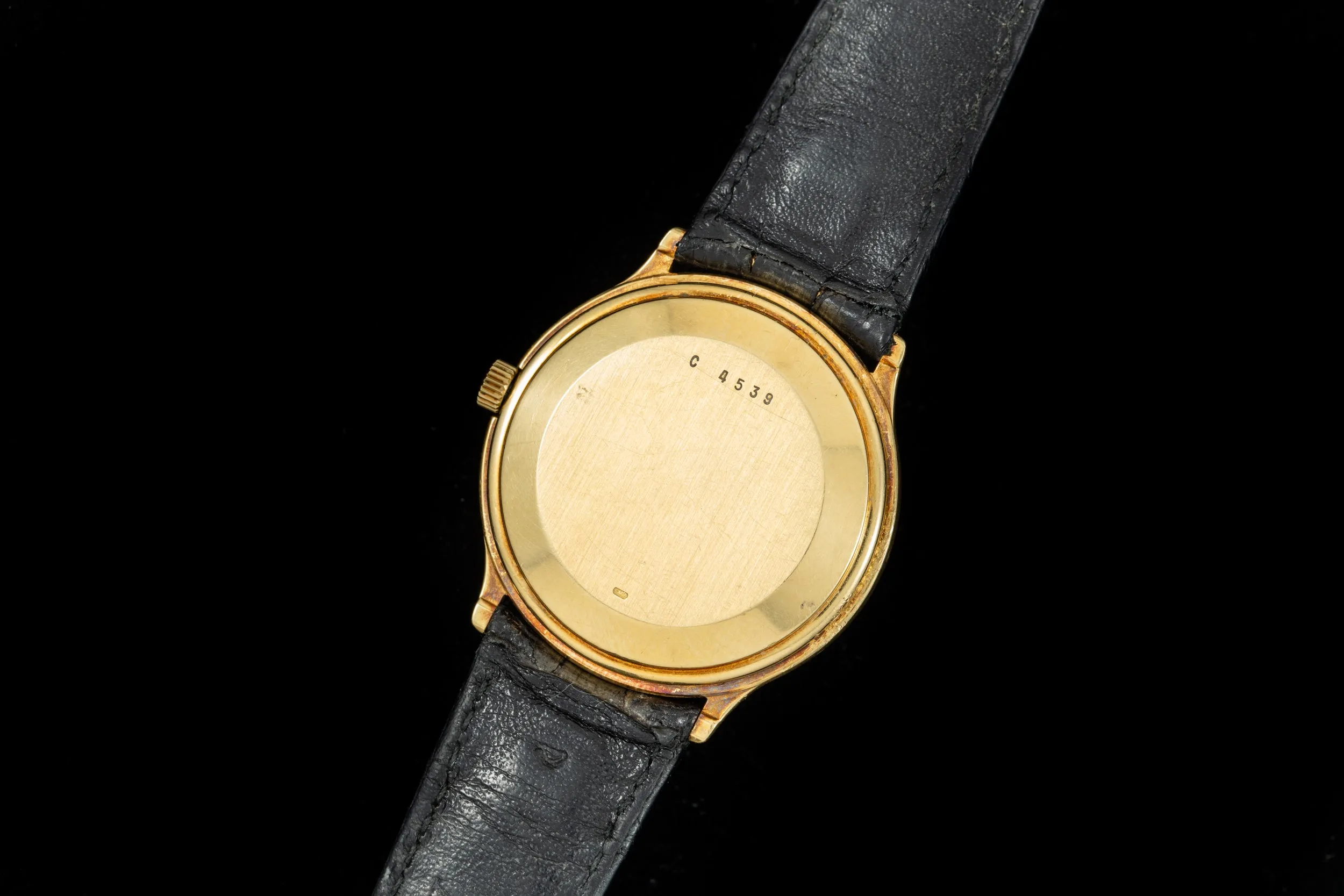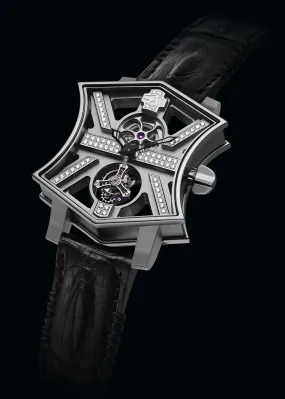Why We Love It
Pieces such as this - a yellow gold moonphase - are the perfect example of Audemars Piguet's design savoir-faire outside of the cherished Royal Oak.
The 33mm 18K solid yellow gold slim line case features a stepped bezel and short, straight lugs give reward the wearer with a timeless design, complimented expertly by its crisp eggshell white lacquer dial with printed Roman indices, yellow gold pencil handset, and vibrant moonphase register at the 6:00 position. A high-grade Calibre 2124 automatic movement drives the piece and features a crown setting mechanism for the moonphase display.
Moonphase registers are perhaps amongst the most 'whimsical' of horological complications, and pieces finished in precious metals with svelte dimension are passed over by many collectors today, but those in the know will recognize that the craftsmanship and materials are way beyond their current market value, and will snatch them up in advance of an inevitable style turn in their direction.
The Audemars Piguet Story
There are certain watches that define a brand, informing its design ethos and becoming nothing short of iconic in the minds of collectors.
For Audemars Piguet, that watch is the Royal Oak—in all its multitudinous incarnations. Yet the manufacture from Le Brassus did not earn its seat in the triumvirate of leading watch brands—the so-called Big Three—on the success of the Royal Oak alone.
In fact, both Jules Audemars and Edward Piguet came from long lines of watchmakers, and made their reputations long before the Royal Oak was conceived. Their reputations rested on their ability to create incredibly elegant timepieces in numerous styles.
Though they may not have had catchy names like the Royal Oak, or boasted complicated movements like the present-day Jules Audemars collection, their vintage dress watches nevertheless captures the attention to detail that Audemars Piguet has come to be known for.

 Cart(
Cart(
